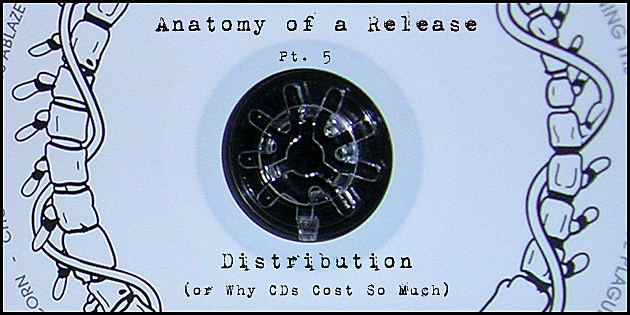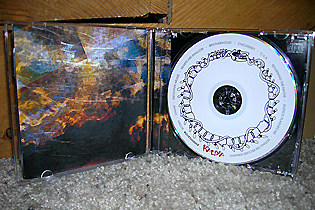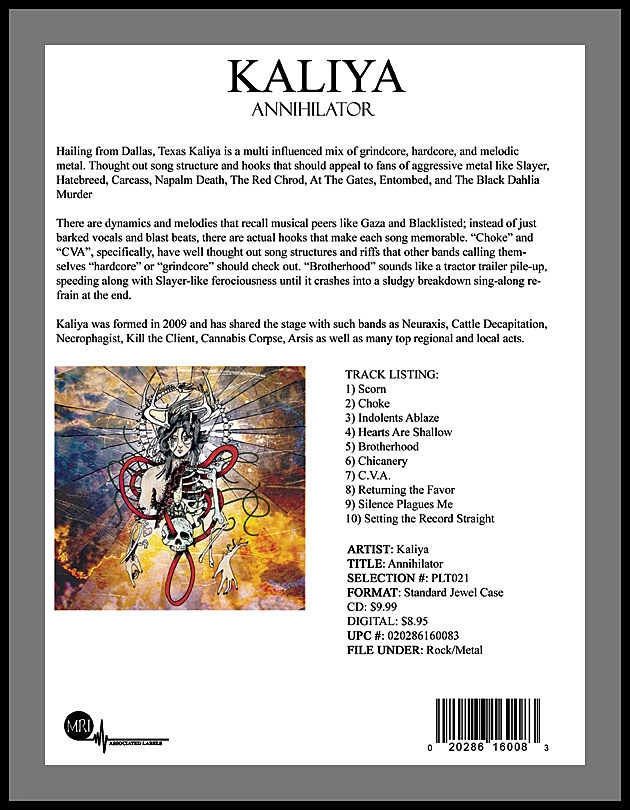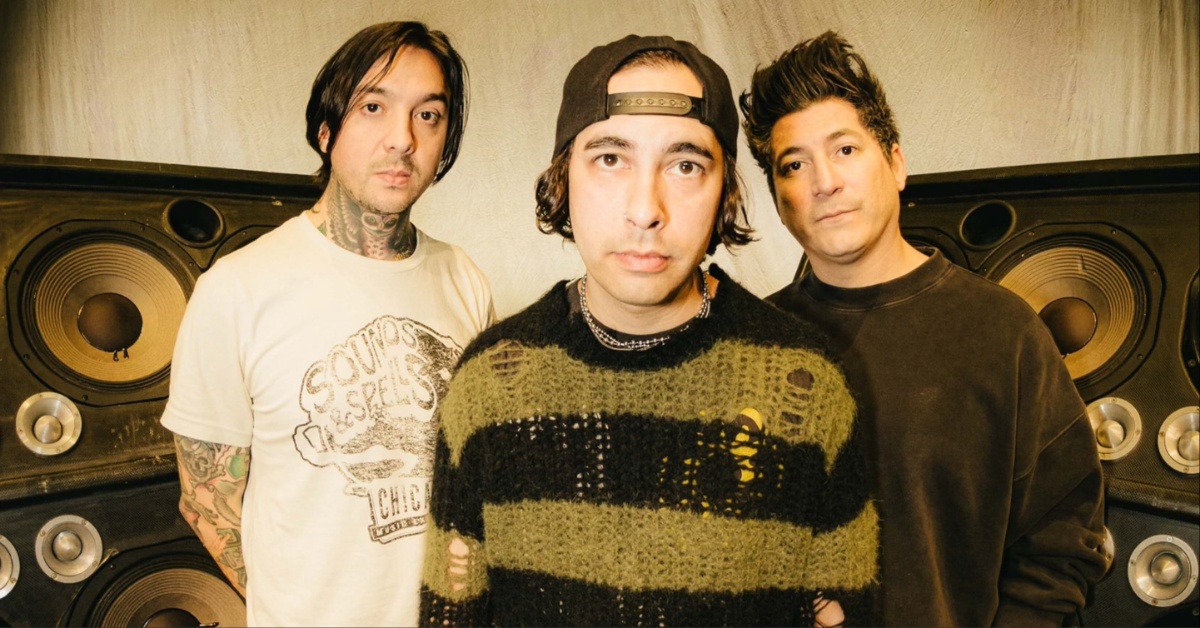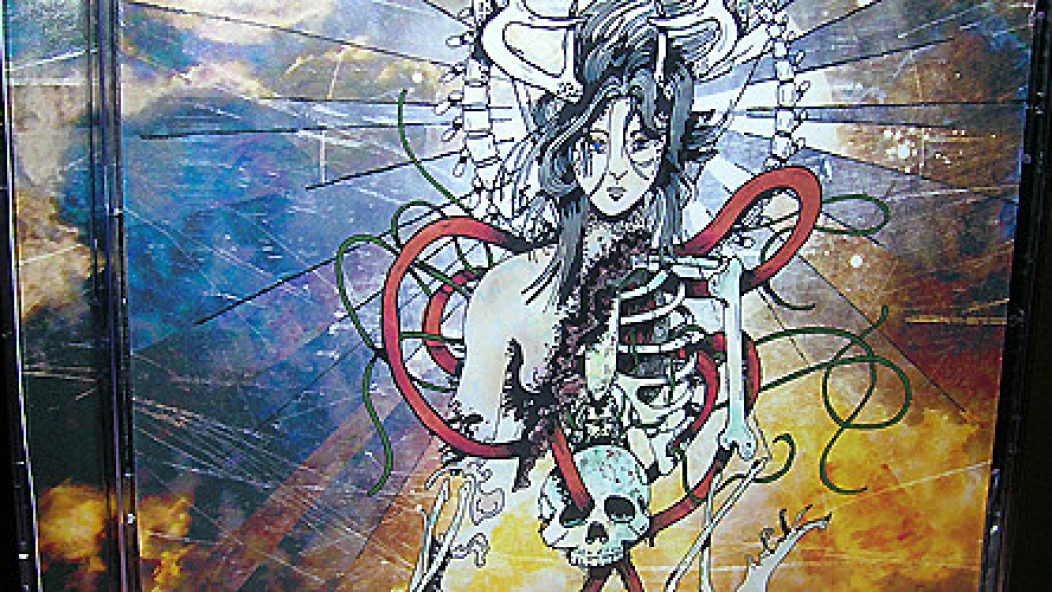
Anatomy of a Release, Pt. 5: Distribution (or Why CDs Cost So Much)
. . .
The series “Anatomy of a Release” will track the progress of a release from start to finish. Part 1 covered signing the band. Part 2 covered recording the album. Part 3 covered album artwork. Part 4 covered mixing and mastering. In this final installment, Sean Crook, label head of The Path Less Traveled Records, talks about distribution.
. . .
ANATOMY OF A RELEASE
PT. 5
DISTRIBUTION
(OR WHY CDS COST SO MUCH)
. . .
Welcome, friends, to my final post for this installment of “Anatomy of a Release”. Hopefully you’ve all learned something. I know I have, thanks to your many replies on the blog and emails I have received. Lately there has been a lot of attention on Spotify hitting the USA. The attention from a metal perspective was that Century Media chose to pull their catalog from Spotify. The Internet immediately blew up with folks on both sides of the fence. I won’t agree or disagree with their decision because I can see both sides, but I will attempt to present the costs I incur with the main focus on distribution and maybe give you a taste where CM and other labels might be coming from.
I’ve heard this line countless times (even said it myself plenty before I started a label): “A CD only costs $0.80 to make. Why do they charge $10 for a piece of plastic? It’s a ripoff so I don’t feel guilty downloading it for free”. We could look at this from many angles, but I will provide the label point of view. There’s a misconception that the $10 sale goes straight to the label, and they just made a $9.20 profit. That is 100% false. I don’t care how small you are or how big you are, unless you run your own store and sell your own stuff, that $10 never comes straight to the label. Here’s a breakdown of certain costs (ballpark figures) just for the music alone:
- Records stores (some still exist): Either owe wholesale cost to RED (around $5) or can return product
- Distributor (I use MRI/RED): 20% of wholesale (usually half of retail price) plus an upfront cost of $450
- ***ALL THE ABOVE MUST BE PAID FOR THE LABEL IS PAID ANY MONEY***
- Amazon/iTunes/etc.: prices vary, but usually a $0.99 song nets about $0.45 after all fees
- Any streaming service (Spotify): usually $0.0001 per play (if that)
Before I go further, I should stress that MRI (Megaforce Records Distribution) and RED have been amazing to me. One day I’m trying to sell stuff myself on Amazon and CDBaby, and then the next I have a contract with MRI/RED and I get my stuff out to stores and every digital outlet imaginable. They’ve been more than patient with all of my stupid questions and missed deadlines when they didn’t really have to be. This label would not be where it is today without them, so if any of you read this, THANKS!
. . .
. . .
Now, back to the money. I set the price of the CD (usually $9.99 for a full-length and less for an EP). I put together what is called a one-sheet. This is basically a sales sheet that is put into a catalog for stores. They flip through the catalog (usually online), and hopefully I’ve put something creative on that one-sheet to make them stop, see the price, and order 100 copies (usually FAR less). The cost to put out that catalog costs money (hence the $400 fee). Someone has to put all that crap together, and considering they deal with a multitude of labels, I can only imagine the time that goes into making the catalog. To add to that, they usually need the one-sheet about two months or so before the release date. At this point, I have to set the release date and hope to have everything ready (digital masters, CDs ready for shipping, promotional stuff timed correctly, etc.). I get nervous around this time. because once everything’s in flight, there’s no turning back on the release date. If the date is missed, I get charged another $400 from the distributor. They have to let all their contacts know there’s a delay, update the new catalog, etc. – a pain in the ass, I’m sure.
Next, I have to deliver the digital master to MRI. This is usually a simple task, assuming the band is done when they say they’re going to be done, or that I haven’t fucked up and looked at the wrong date on the sheet provided by MRI (both have been fucked up before). I usually order a certain amount of CDs during this time to get the ball rolling. Anyone who has ever had a CD pressed knows they get fucked up from time to time, and if you wait for the PO (purchase order) from the distributor, you have about a three-week windows to get the product to RED. Most places can get a CD printed quickly IF, and this is a big IF, you have your ducks in a row for the artwork. I highly recommend having someone who is a graphic designer who is available whenever needed. I’m lucky to have a friend who does it for a living and likes doing this on the side for the cost of a free CD. This is hard to come by, and no, I’m not giving out his information. I need to spare every dollar I can. I’ve offered to give him money. and he insists on CDs only.
During these two months of waiting, there’s a lot of promotion that goes on (if it can be afforded). Here’s a breakdown of some of the costs:
- Full page ad in magazine (one month): $1,200 – $1,600
- Ad on web page: $50 – $300 per month (or more depending on how many hits the website receives)
- PR (per release/per month): $250 – $1,500 (or more)
. . .
Of all of these, PR to me is the most important. I’ve put out around 20 or so pieces of music. Odds are out of all those masterpieces, you’ve heard of Imbroglio, Flourishing, and Tiger Flowers the most. Why might that be? I had a PR person do the legwork. His name is Curran Reynolds (drummer for Wetnurse/Today Is the Day). He is a bandmate of Garett Bussanick from Flourishing. Curran also knew a contact from MRI, so you can kind of see how all of this transpired. Distribution and PR work translates into more sales. Curran lives in NYC and knows people. He knows whom to contact, and is also great at writing up press releases (which I usually use a portion of for my one-sheet). I was floored the first time I used him: reviews, interviews, etc. I contacted these SAME folks for reviews by myself and didn’t get far. Why? I was just some other small-fuck label. Curran KNOWS people, and when he says, “Listen”, they listen. That’s what PR is, and why it’s so important. Most larger labels have an in-house person that handles their PR. This is a full-time job for labels that put out a lot of music every month. Constant emailing and phone calls have to happen to get the hype machine rolling.
The PR rolls and rolls up until the release date. By the time the CD comes out, the magazines and web sites should have reviews up, ad banners are placed, magazine ads are placed, etc. The band is in front of your face and ingrained into your head, so on release date, we hope you go out and buy it. If we sell enough, we get a check in the mail. If not, we get the dreaded sales sheet with a number in parentheses. Those in the business know this means negative dollars, and that enough was not sold to cover the cost of distribution. Luckily I can roll the balance over each month if I’m in the parentheses (which sounds better than “negative”).
I thought the metal community was different than the pop community. and in all reality, sadly, it isn’t. Hype sells (just ask any band with straight bands and skinny jeans). We metal folks would like to think we’re different, but we’re not. We read the blogs and magazines hyping the same stuff, and that’s typically what we pay attention to. I have many a metal blog on my RSS feed, and once I read one big blog, I can pretty much write off 99% of the other stuff as duplicates. Invisible Oranges and a few others are the exceptions. Some write about what they like, no matter who the PR person is. Others write about bands who advertise on their web page or in their magazine: a scratch-my-balls-and-I’ll-scratch-yours type of thing. It’s sickening but a reality. You can put out the shittiest music known to man, but with the right hype and right PR, it will sell.
. . .
One-sheet for Kaliya’s Annihilator
. . .
So why does a CD cost $5.99 at Best Buy and $17.99 at Borders? Well, Best Buy is in business and Borders isn’t; that should tell you what you need to know right there. These companies take (or took, in Borders’ case) two different approaches. Borders primarily sold books, not music. Books aren’t very expensive. Their guess was if you go into buy a book and read for a bit, and there happened to be a CD you wanted, you’d pay for the convenience of buying it there instead of heading to Best Buy. They were wrong. This wasn’t the only reason they folded, but their idea of selling CD’s at $17.99 in 2011 was nuts.
Now let’s look at Best Buy. Best Buy does what is called loss leader pricing. Best Buy actually LOSES money on CD sales. Pretty stupid, huh? Not really. If you walk into Best Buy, odds are you go there for music and maybe a new phone, iPod, or something else. The money they make off those sales outweighs the loss they take on the CD. In a place like Borders, you can’t really do that when the most expensive thing in your store is a book. Best Buy has $5,000 TVs. They can afford to lose the $2 on a CD. Even if you buy a video game at Best Buy for every 10 CDs you buy, they’re still making money off you.
. . .
You know from my previous posts that the cost just to record/mix/master and then get a product together is usually $3,000 (on the very low end). Add up the costs above, and you can see why some labels might seem like tightwads. I do this because I love it, but it’s also a business. When I hear folks say they download music for free, it bugs the shit out of me. Even streaming music bugs the shit out of me. It’s convenient and all, but music isn’t about convenience. It’s about passion and escaping your crappy life. I like the fact that I can put music out there, and somewhere some kid might run across it and stream it, and I’ll get my $0.0001, and hopefully he/she gets a break from their crappy life. But I hope he will turn around and buy a CD or go to a show, because to me, that tangible human experience is what it’s all about. I don’t expect to make money from streaming, so I honestly don’t care if my music is out there. If Lady Gaga can’t make money off of streaming, I know I can’t, either. (See here.) I know some venues that stream shows on web pages so folks can watch from home instead of attending the show. I hope this isn’t what the world is coming to.
Labels will need to rethink the way they do business and reel it in a bit. CDs still sell, but the days of CDs selling for $14.99 or even $12.99 are fading fast.. I think music packaged with another tangible good will have to take the place of the CD. Vinyl is great, but WAY too expensive. I see more package deals for smaller labels, and for larger labels, maybe giving away the CD with the purchase of a ticket to a show. Then the fans come to the show and will maybe buy a t-shirt or something of that nature. The demand will steer the music industry and not the other way around. Folks are more independent these days and have more choices. Labels will still be needed for funding and dealing with the headaches many bands don’t want to deal with. As you can see, there’s a lot to this, and I hope it may give some of you the inspiration to throw a few bucks towards your favorite band.
I could probably write for days on this, but I’ll stop. I hope you’ve all learned a thing or two from all of this. I know I have from reading your comments. I want to thank Curran, Missi from MRI, the folks at RED, Ben and Kaliya, and especially Cosmo and all of you who read IO. I hope you have enjoyed these posts. It has been an honor and a privilege. Now go buy some fucking metal!
The Path Less Traveled Records
. . .
Kaliya’s Annihilator comes out today.
. . .
STREAM & BUY ANNIHILATOR
. . .
